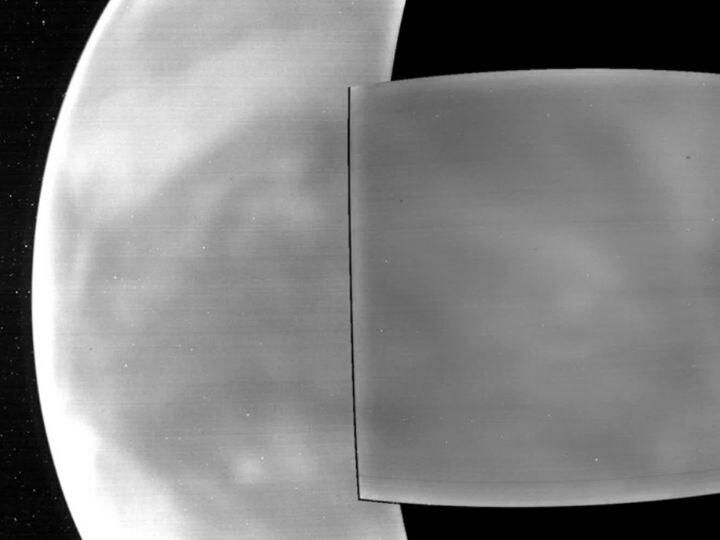New Delhi: NASA’s Parker Solar Probe, the spacecraft which “touched the Sun” last year, has captured its first visible light images of the surface of Venus from space.
Venus’ surface is usually shrouded from sight, as it is smothered in thick clouds. The Parker Solar Probe, also called Parker, in the spacecraft’s two recent flybys of Venus, used the Wide-Field Imager for Parker Solar Probe, or WISPR, to image the entire nightside in wavelengths of the visible spectrum, NASA said on its website. WISPR are the cameras pointed at the nightside of Venus as the spacecraft flew by the planet in 2020 and 2021.
Visible light is what the human eye can see, and extends to the near-infrared spectrum.
The images captured by Parker have been combined into a video. They reveal a faint glow from the surface that shows distinctive features like continental regions, plains, and plateaus. In the atmosphere of Venus, a luminescent halo of oxygen can be seen surrounding the bright planet.

As Parker Solar Probe flew by Venus on its fourth flyby, its WISPR instrument captured these images, showing the nightside surface of the planet. (Photo: Screengrab of NASA Video)
The findings of the study were published on Wednesday, February 9, in the journal, Geophysical Research Letters.
“We’re thrilled with the science insights Parker Solar Probe has provided thus far,” Nicola Fox, division director for the Heliophysics Division at NASA Headquarters, was quoted as saying in NASA statement.
She said that Parker continues to outperform our expectations, and NASA is excited that these novel observations taken during the gravity assist maneuver can help advance Venus research in unexpected ways.
Venus is often called Earth’s twin, and such images can help scientists learn more about the planet’s surface geology, what minerals might be present there, and the planet’s evolution, according to NASA.
Since Earth and Venus have certain similarities, the information about the latter can help scientists understand why Venus became inhospitable, and Earth became an oasis.
Quoting Brian Wood, the lead author on the new study and physicist at the Naval Research Laboratory in Washington, DC, the statement said that Venus is the third brightest thing in the sky, but until recently, “we have not had much information on what the surface looked like because our view of it is blocked by a thick atmosphere.
“Now, we are finally seeing the surface in visible wavelengths for the first time from space,” he further said.
Venus ‘Glowing Like An Iron From The Forge’
Most of the visible light coming from Venus’ surface is obstructed by clouds. However, the very longest visible wavelengths, which border the near-infrared wavelengths, make it through, according to NASA.
This red light, on the day side, gets lost amid the bright sunshine reflected off Venus’ cloud tops.
The WISPR cameras, in the darkness of the night, were able to pick the faint glow caused by the incredible heat emanating from the surface of Venus.
Wood said that the surface of Venus, even on the nightside, is about 860 degrees. He added that it is so hot the rocky surface of Venus is visibly glowing, like a “piece of iron pulled from a forge.”
WISPR picked up a range of wavelengths from 470 nanometres to 800 nanometres, as it passed by Venus.
Near-infrared wavelengths cannot be discerned by the human eye, but can be sensed as heat. Some of the light picked up by WISPR belongs to the near-infrared spectrum.
Some of the light is in the visible range, between 380 nanometres and about 750 nanometres, according to NASA.
,